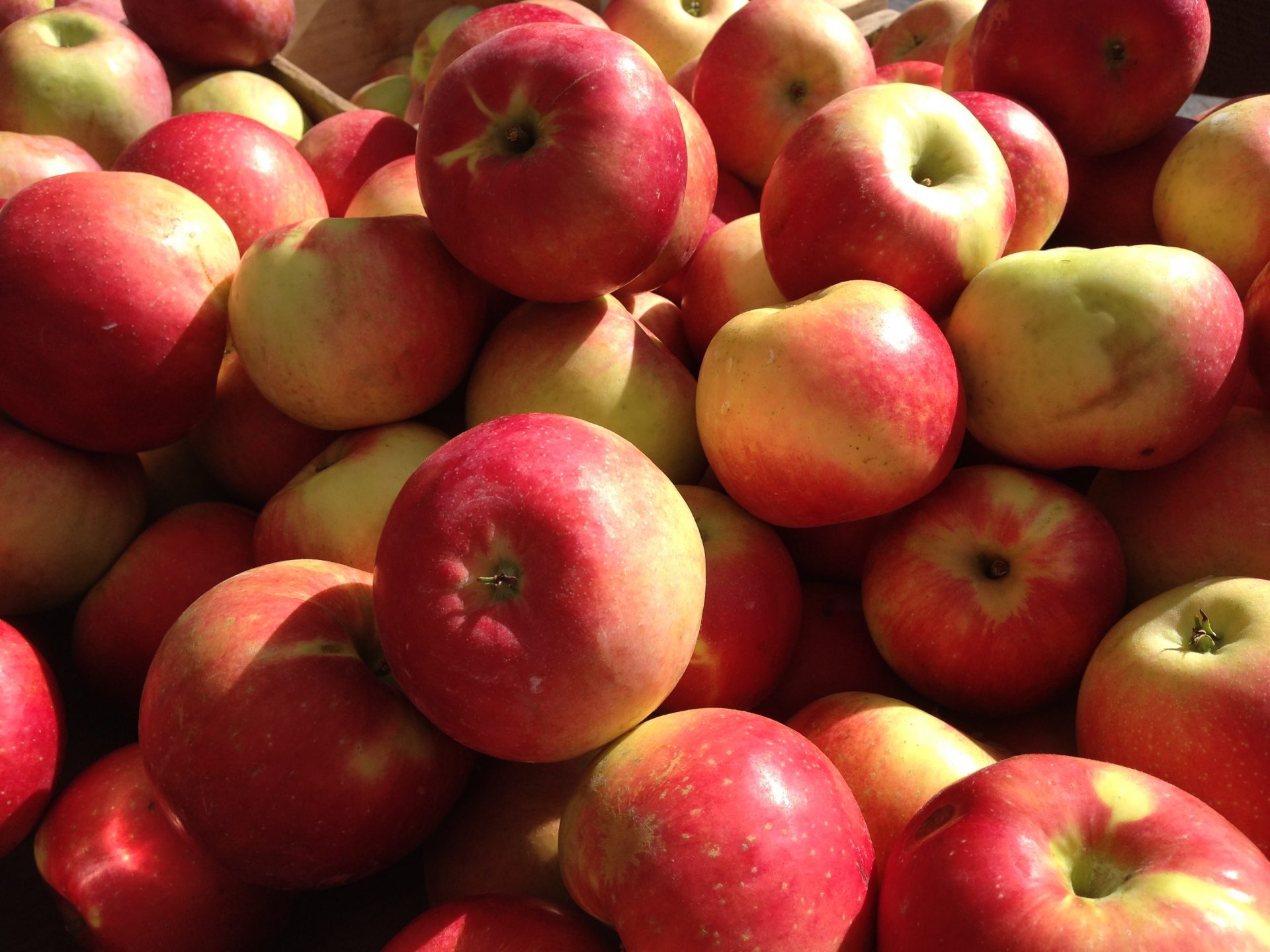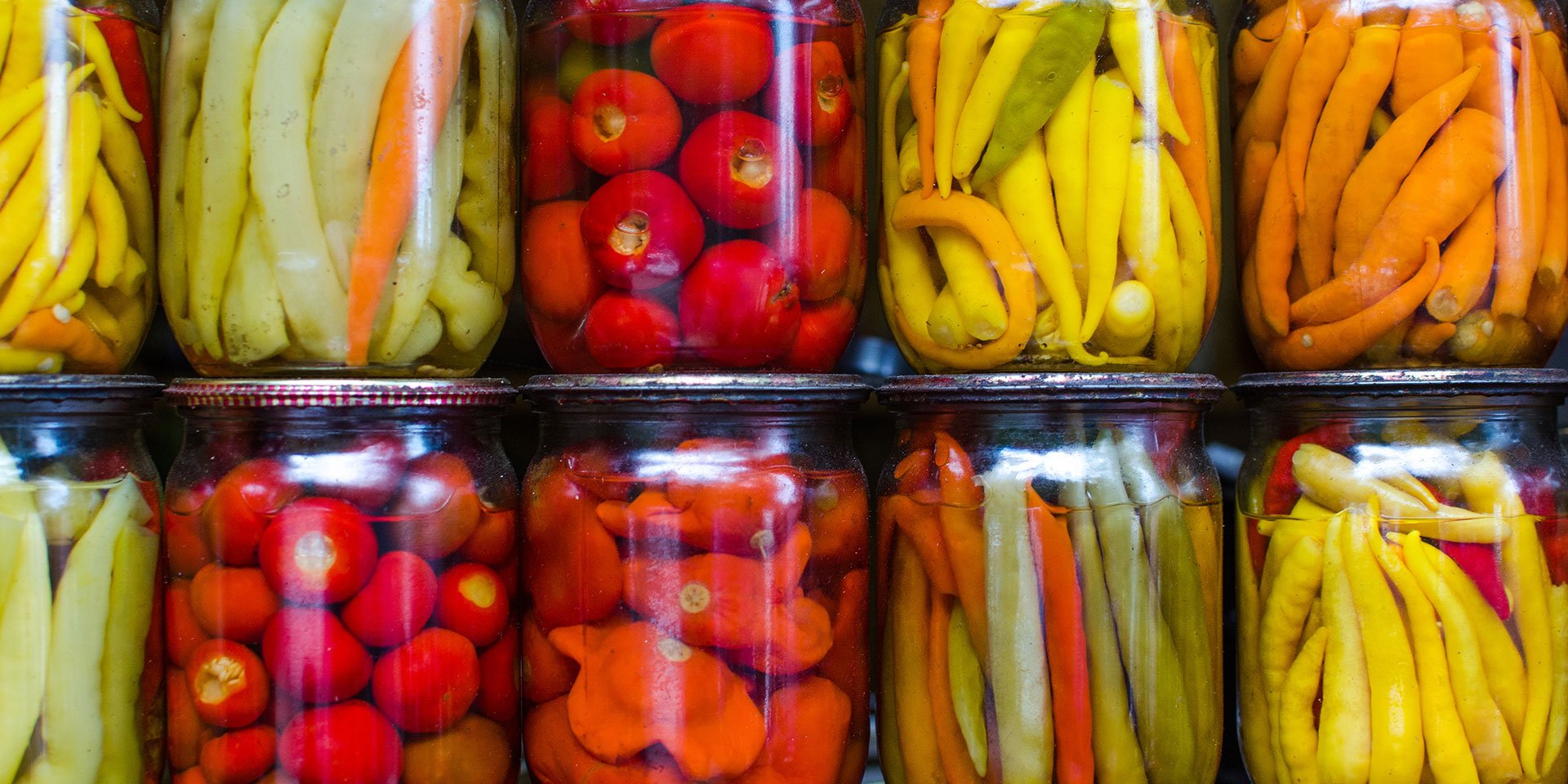Real Food Encyclopedia | Cider
There are a few things that are absolute musts in the fall — as in, fall wouldn’t be fall without them: pumpkins, decorative gourds, fuzzy sweaters, leaf peeping and apple cider.
Cider or cider-like beverages have a long history in Europe and in North America and were immensely important in Colonial America. But then, it’s popularity in the U.S. began to wane due to competition from beer and then prohibition. Today, artisanal cider is making a comeback in the United States, and continues to expand in popularity with the growing amount of people going gluten-free (cider is naturally gluten-free).
Fun facts about cider:
- The cider press was invented in the 14th century.
- “Ciderkin” was a colonial beverage made with the apple pulp left over after pressing the apples. It was weakly alcoholic and mainly drunk by children.
- According to historians at Monticello, Thomas Jefferson grew two varieties of apples specifically for making the beverage: Hewes’ Crab and Taliaferro. Jefferson said of the Teliaferro: it was “the best cyder apple existing … nearer to the silky Champagne than any other.” Unfortunately, this variety of apple (like many others) seems to have gone extinct.
What to look for when buying cider
Here in the U.S., we refer to non-alcoholic apple cider as simply “cider” (or sometimes “sweet cider”) and alcoholic cider as “hard cider.” In England, “cider” is always hard, and what we know as sweet cider is referred to as apple juice.
Which brings us to the question: what is the difference between apple juice and (sweet) apple cider? Essentially, apple cider is unfiltered apple juice. Apple juice is filtered to remove sediment and pulp; it is this sediment that makes apple cider cloudy, while apple juice is clear. In general, apple juice is also heat-treated to make it shelf-stable, while apple cider is a perishable product which requires refrigeration.
To make it, apples are passed through an apple press, and the juice extracted. Here is a great photo series on making apple cider at home, if you’d like to see the process. The resulting pulp (called “pomace”) was traditionally fed to pigs. If left to ferment in the presence of yeast, apple cider turns into hard cider, which can be still or sparkling, and can vary greatly in alcohol content depending on how long it is left to ferment. If left to ferment even further, acid-forming bacteria consume the alcohol in the mixture, turning it into apple cider vinegar. But wait! There’s more! If you distill hard cider, you get apple brandy: traditionally applejack here in the U.S., and Calvados in France.
Sweet cider is just that: sweet, with more complexity and flavor than apple juice. Depending on the apple variety that the cider is made from, the resulting liquid may range from dark brown to blonde in color, with varying amounts of sediment, acidity and sweetness. Most commercial varieties are treated with ultraviolet light to kill harmful bacteria, or pasteurized, but it is possible to find unpasteurized products if you want to live a little dangerously. Hard cider is bottled like beer, and, like beer, can range in flavor complexity (from dry to fruity), carbonation and alcohol content. Generally “hard” cider ranges from three to seven percent alcohol content, while sweet cider must fall below three percent. Above seven percent and it is officially applejack.
Sustainability of cider
The good news is that organically produced, local hard apple cider may be one of the most eco-friendly drinks out there. The beverage doesn’t require excessive amounts of water to produce, like beer and other spirits. The resulting pulp can be fed to farm animals or composed. If your cider is a local product, shipping is minimal.
Pesticides
For many years in the running, apples have had the ignominious distinction of being on top of the Environmental Working Group’s Guide to Pesticides on Produce. Because apple cider is generally made with the whole fruit, skin and all — pesticide levels in the drink is a major concern. Choose organic apple cider (both sweet and hard) when you can to avoid harmful chemicals.
Seasonality and geography
Sweet apple cider is a traditional fall drink, available during the apple harvest, which is typically from the end of August through October in much of the country. Hard cider is now available year-round.
Cultivation
Apples (Malus domestica) are the in the rose family and count a huge number of edible fruits and nuts as their cousins. Native to Central Europe, the earliest ancestors of the apples we are familiar with today more closely resembled tart crab apples than sweet MacIntoshes. Although it can be made from any variety of apple, commercial cider-making typically utilizes tart varieties, sometimes in combination with sweet varieties for balance.
How to cook with cider
Storing
Sweet apple cider requires refrigeration — it will generally begin the earliest fermentation stages after about two weeks. Hard cider can be stored in-bottle indefinitely.
Cooking
Both sweet and hard cider can do wonderful things in your autumn kitchen. On the savory end of things, think fall: the beverage pairs beautifully with pork, poultry (like turkey), winter squash and root veggies like sweet potatoes and parsnips. Try making this butternut squash soup with a delicious apple cider cream in the fall. Pork and apple cider pairs very well, as in this cider-brined pork roast and these braised brats — especially if you get your hands on pork that was fed apple pomace.
On the sweet side, who can resist apple cider doughnuts? It is also delicious in fall breads, pies , muffins and caramels. Or, try making your own sparkling cider.
Hard cider can (and should) be paired with food just like beer and wine can be. Here’s a nice guide to pairing cider with food — but cider enthusiast Christopher Lehault tells us that a good shortcut is to pair hard cider with foods that go well with apples: think pork, cheese, roasted vegetables and poultry.
Preserving
Boiled cider, made by boiling down sweet apple cider until it forms a delicious syrup, makes a fantastic addition to traditional apple pies and is also used in New England to make a boiled cider custard pie. Boiled cider is a bit pricy to buy, but you can easily make your own if you have a bit of extra time on your hands.
Nutrition
A cup of apple cider contains decent amounts of potassium, Vitamin C and iron, and the pectin in apples may help lower cholesterol.
Top photo by Guillaume FREY/Adobe Stock.


